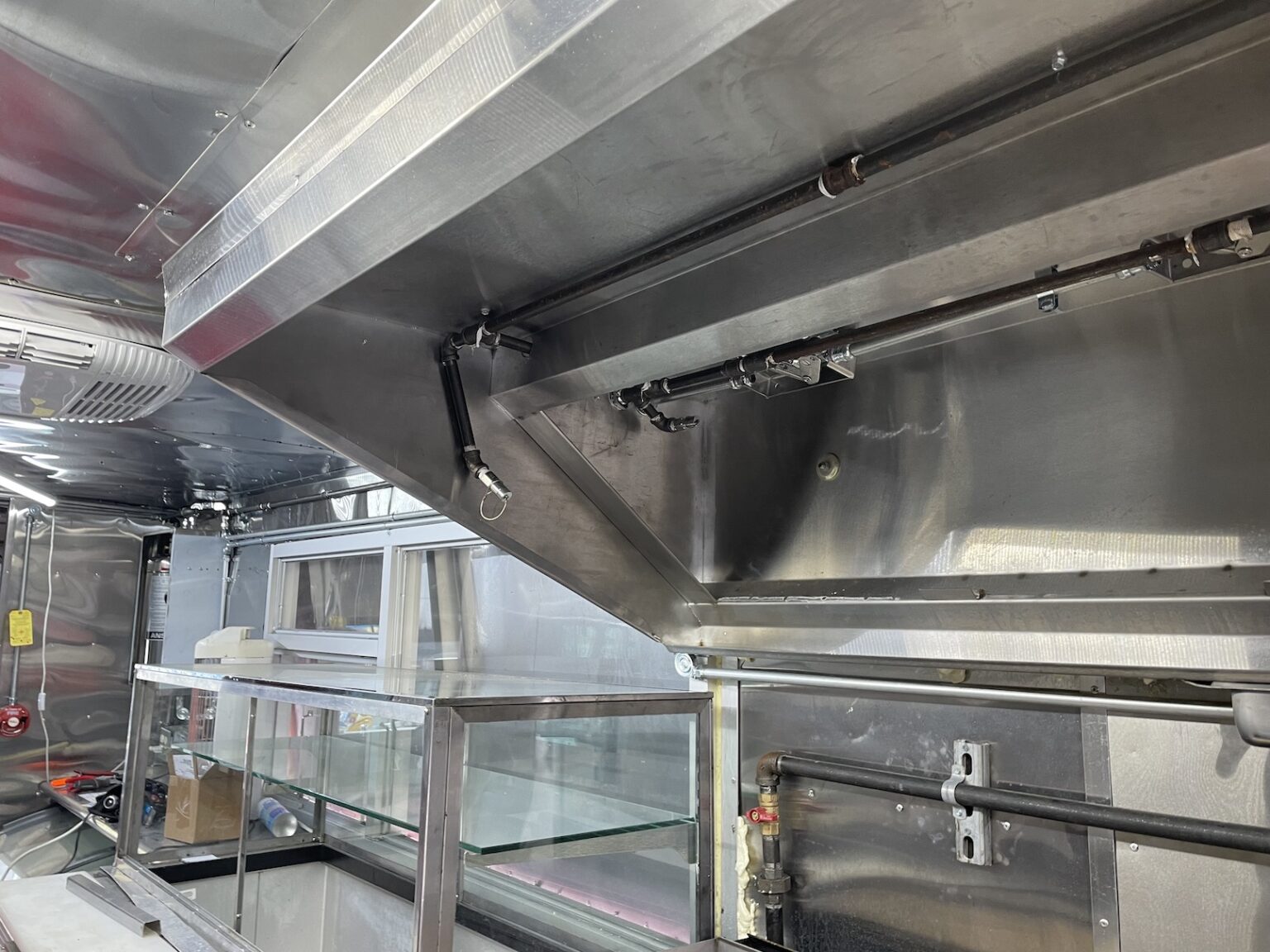Buying a Restaurant or Food Services Business
Repairing a restaurant kitchen hood system can be a complex and challenging task due to several factors, including:
Access: Kitchen hood systems are often located in hard-to-reach areas, such as high ceilings or cramped spaces. This can make it difficult for repair technicians to access the system and perform repairs.
Size: Commercial kitchen hood systems can be large and complex, with many different components that need to be repaired or replaced. This can make it challenging for technicians to diagnose and fix problems quickly.
Safety: Kitchen hood systems are designed to remove smoke, heat, and other harmful contaminants from the kitchen. However, these systems can also be dangerous if they are not properly maintained or repaired. Repair technicians need to be trained in safety procedures to prevent accidents and injuries.
Time: Kitchen hood systems are essential for restaurant operations, and downtime can be costly. Repair technicians need to work quickly and efficiently to minimize disruptions to the restaurant’s operations.
Complexity: Kitchen hood systems are comprised of many different components, including fans, filters, ductwork, and fire suppression systems. Repair technicians need to be knowledgeable about each of these components to properly diagnose and repair problems.
Regulations: Kitchen hood systems are subject to various codes and regulations, including those related to fire safety and air quality. Repair technicians need to be familiar with these regulations to ensure that repairs are compliant and meet safety standards.
There are a few other factors as well that require an experienced master fire contractor with ample insurance and certified fire protection services technicians on staff.
Permits and Regulations: Renovating a restaurant typically involves obtaining permits and adhering to regulations related to building codes, zoning laws, and health and safety regulations. Failing to comply with these requirements can result in delays and additional costs.
Design and Layout: The design and layout of a restaurant can greatly impact the success of the renovation. Renovating the dining area, kitchen, and restroom can be complex, and may require the help of architects, engineers, and contractors. Proper planning and coordination are necessary to ensure that the design is functional, aesthetically pleasing, and meets safety regulations.
Equipment: Renovating a restaurant often involves updating or replacing equipment, such as ovens, refrigerators, and stoves. This can be a significant expense, and it’s important to choose equipment that is appropriate for the restaurant’s needs and budget.


Buying a Restaurant or Food Services Business
Repairing a restaurant kitchen hood system can be a complex and challenging task due to several factors, including:
Access: Kitchen hood systems are often located in hard-to-reach areas, such as high ceilings or cramped spaces. This can make it difficult for repair technicians to access the system and perform repairs.
Size: Commercial kitchen hood systems can be large and complex, with many different components that need to be repaired or replaced. This can make it challenging for technicians to diagnose and fix problems quickly.
Safety: Kitchen hood systems are designed to remove smoke, heat, and other harmful contaminants from the kitchen. However, these systems can also be dangerous if they are not properly maintained or repaired. Repair technicians need to be trained in safety procedures to prevent accidents and injuries.
Time: Kitchen hood systems are essential for restaurant operations, and downtime can be costly. Repair technicians need to work quickly and efficiently to minimize disruptions to the restaurant’s operations.
Complexity: Kitchen hood systems are comprised of many different components, including fans, filters, ductwork, and fire suppression systems. Repair technicians need to be knowledgeable about each of these components to properly diagnose and repair problems.
Regulations: Kitchen hood systems are subject to various codes and regulations, including those related to fire safety and air quality. Repair technicians need to be familiar with these regulations to ensure that repairs are compliant and meet safety standards.

There are a few other factors as well that require an experienced master fire contractor with ample insurance and certified fire protection services technicians on staff.
Permits and Regulations: Renovating a restaurant typically involves obtaining permits and adhering to regulations related to building codes, zoning laws, and health and safety regulations. Failing to comply with these requirements can result in delays and additional costs.
Design and Layout: The design and layout of a restaurant can greatly impact the success of the renovation. Renovating the dining area, kitchen, and restroom can be complex, and may require the help of architects, engineers, and contractors. Proper planning and coordination are necessary to ensure that the design is functional, aesthetically pleasing, and meets safety regulations.
Equipment: Renovating a restaurant often involves updating or replacing equipment, such as ovens, refrigerators, and stoves. This can be a significant expense, and it’s important to choose equipment that is appropriate for the restaurant’s needs and budget.

To see what the professionals at Master Fire Prevention do every day, visit our recent jobs page at https://www.masterfirepreventionsystem.com/recent-jobs-blog/. Check out our YouTube Channel for lots of helpful and informative videos at www.youtube.com/fireprotectionnyc, and don’t forget to follow us on instagram at https://www.instagram.com/masterfireprevention/.